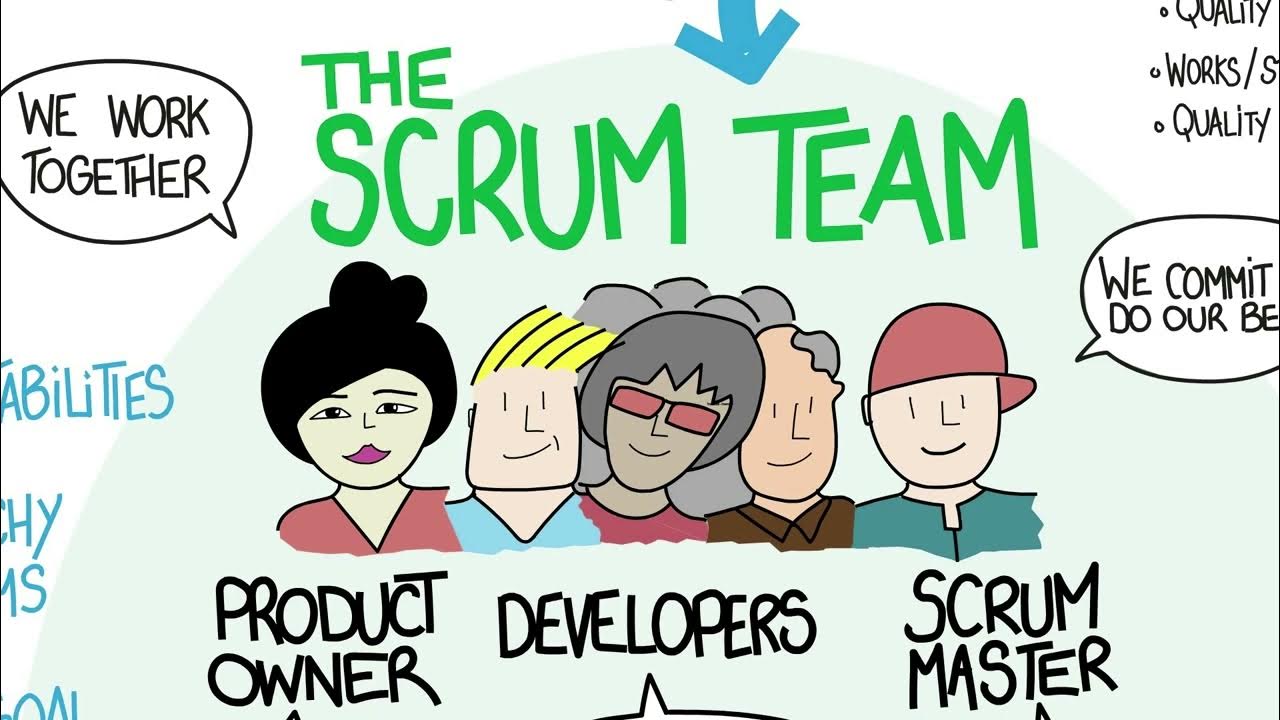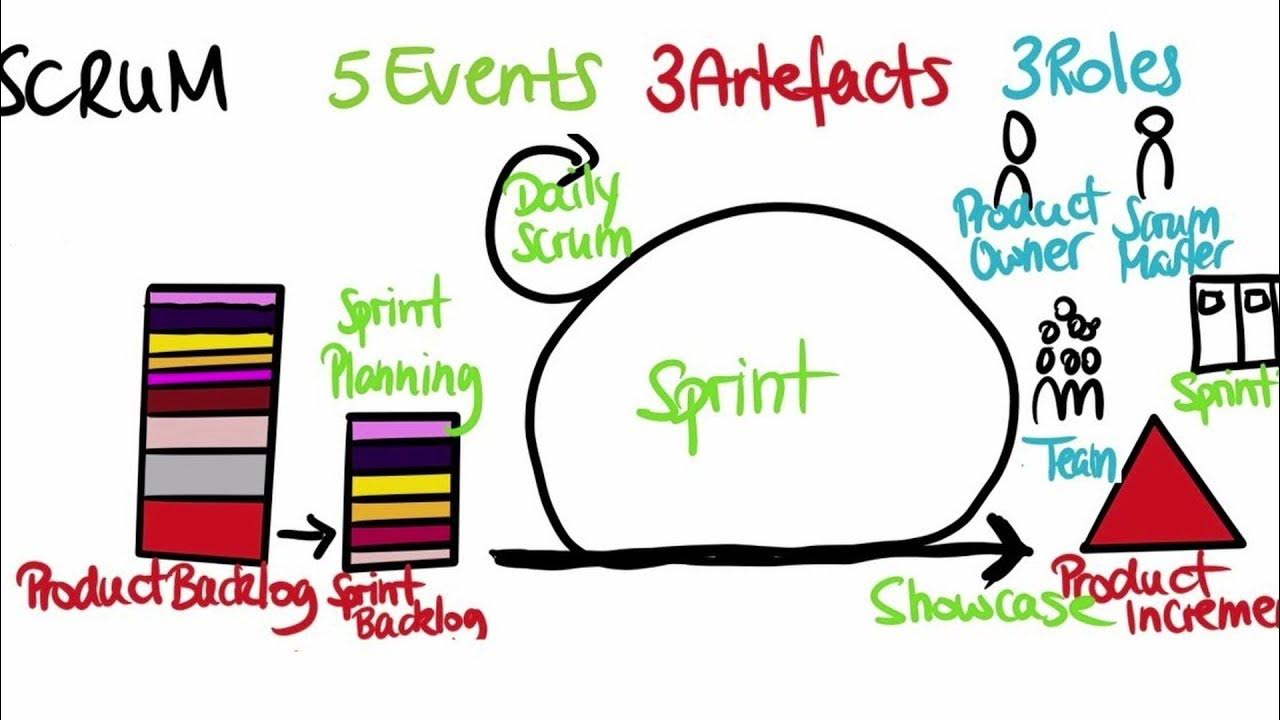Understanding Scrum Metrics : Velocity, Burn down chart, Burn Up Chart
Summary
TLDRThis video explores the importance of story points and velocity in Scrum, focusing on how they help teams estimate and track progress during sprints. It explains how velocity is calculated and used for future sprint planning, offering valuable insights into how teams can adjust their pace using burn down charts. The product owner's role in engaging stakeholders through burn-up charts for date-driven and scope-driven planning is highlighted, with an emphasis on budgeting based on team velocity. The video emphasizes the predictive power of these metrics for both delivery timelines and cost estimation, enhancing communication with stakeholders.
Takeaways
- 😀 Story points are essential in Scrum for estimating user stories and defining a team's velocity.
- 😀 Velocity represents the number of story points a team can complete in a sprint and is a key metric in Scrum.
- 😀 Teams usually need 3-4 sprints to stabilize their velocity and predict future capacity accurately.
- 😀 Velocity accounts for real-world work conditions, like meetings and interruptions, providing a realistic view of the team's capacity.
- 😀 The burn-down chart is used to track the progress of a sprint, with story points plotted against days.
- 😀 The ideal burn-down chart shows a straight line, representing constant progress toward completing user stories.
- 😀 If a team is above the ideal line on the burn-down chart, they are ahead of schedule; if below, they need to catch up.
- 😀 Burn-up charts track the total story points in the product backlog across sprints, helping product owners predict future work.
- 😀 Product owners can use burn-up charts to communicate deliverables to stakeholders using date-driven or scope-driven planning.
- 😀 Date-driven planning estimates what can be delivered by a specific sprint based on the team's velocity, while scope-driven planning estimates when the MVP can be delivered.
- 😀 Cost estimation for the MVP can be derived by multiplying the sprint cost by the number of sprints required for delivery.
Q & A
What is the significance of story points in Scrum?
-Story points are a key metric in Scrum, used to estimate the effort required to complete a user story. They help teams define their velocity, which is a measure of how much work the team can handle in a sprint.
How is velocity calculated in Scrum?
-Velocity is calculated at the end of a sprint by totaling the story points of all fully completed user stories. This helps in predicting the team’s capacity for future sprints.
What is the purpose of tracking velocity in Scrum?
-Tracking velocity helps teams predict their capacity for upcoming sprints, refine their estimations over time, and turn estimation units into actual time and cost for the business.
How do story points account for real work situations?
-Story points naturally account for real work situations, including interruptions like meetings and other distractions, by reflecting the team's true capacity rather than just idealized work hours.
What is a burn down chart and how does it help a Scrum team?
-A burn down chart is a visual tool used to track the progress of user stories during a sprint. It shows the number of story points completed over time, helping the team determine whether they are on track to complete their work within the sprint.
What does the ideal line in a burn down chart represent?
-The ideal line in a burn down chart represents the perfect, consistent pace of completing user stories throughout the sprint. It serves as a benchmark for the team's progress.
How does the burn down chart help the Scrum team adjust their work?
-If the team is above the ideal line, they need to adjust their work pace to stay on track. If they are below the ideal line, they may finish early and can request more user stories from the product owner.
How does a product owner use a burn up chart in Scrum?
-A product owner uses a burn up chart to track the total number of story points in the product backlog and predict the team’s ability to deliver over multiple sprints. It helps forecast delivery dates and the number of story points that can be delivered in future sprints.
What are the two main types of planning that a product owner can use with burn up charts?
-The two main types of planning are date-driven planning, where stakeholders ask for delivery estimates by a certain sprint, and scope-driven planning, where stakeholders want to know when a minimum viable product (MVP) will be delivered.
How can the product owner estimate the cost of delivering a minimum viable product (MVP)?
-The product owner can estimate the cost of delivering an MVP by determining how many sprints are needed to complete the MVP and multiplying the cost per sprint by the number of sprints required.
Outlines

This section is available to paid users only. Please upgrade to access this part.
Upgrade NowMindmap

This section is available to paid users only. Please upgrade to access this part.
Upgrade NowKeywords

This section is available to paid users only. Please upgrade to access this part.
Upgrade NowHighlights

This section is available to paid users only. Please upgrade to access this part.
Upgrade NowTranscripts

This section is available to paid users only. Please upgrade to access this part.
Upgrade NowBrowse More Related Video

Inside The Scrum Team - 15-Minute Introduction to Scrum - Free Scrum Course

Jira tutorial in Hindi | What is jira software | introduction

The Scrum Guide (In under 15 minutes!)

Agile Sales Execution using Scrum with Trello - Part 2 - Step-by-Step Demo

SCRUM Model in Software Engineering | Agile Technology

TERBARU - Materi & Soal SKB Penata Kelola Sistem dan TI - Pengembangan Agile & Metodologi SCRUM
5.0 / 5 (0 votes)